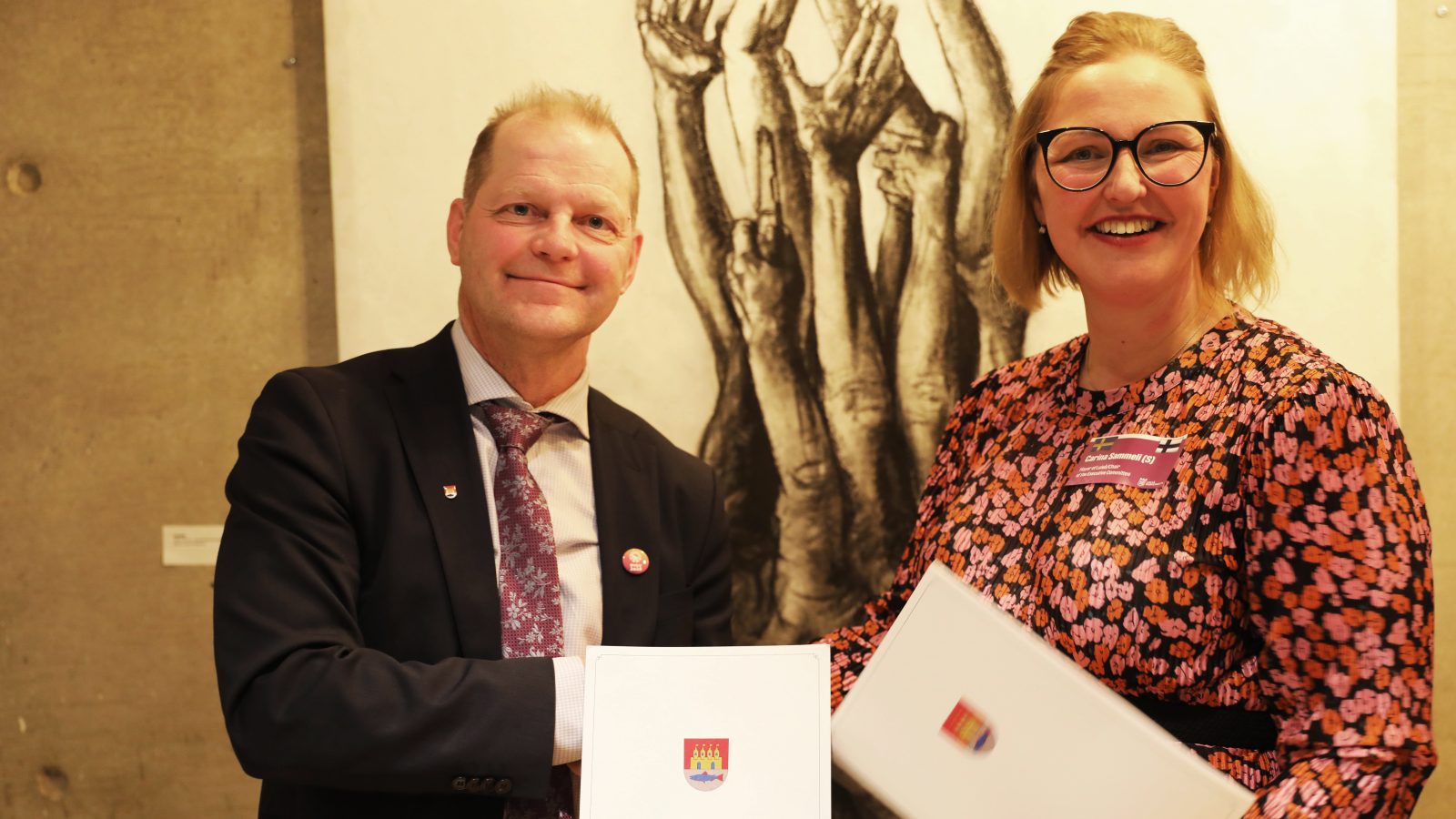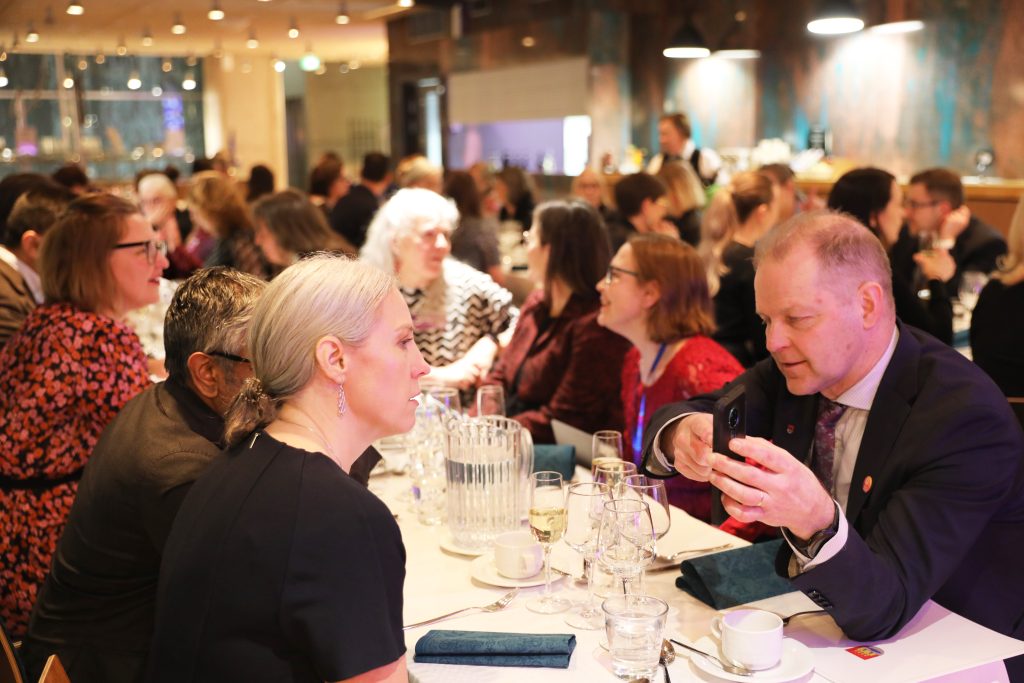My Oulu: The mayors believe that a railway route connecting Oulu and Luleå will bring the people of the north together

Cooperation agreement between Oulu and Luleå is up to date, confirmed mayors Ari Alatossava and Carina Sammeli when they met in Oulu last week. Photos: Anne Laurila
NATO membership, major investment projects and the TEN-T network are a combination that has finally put the cities of northern Sweden and northern Finland on the map of Europe. When the leaders of the cities of Luleå and Oulu meet, a long list of different cooperation initiatives and ongoing projects must be reviewed.
Regional development in Northern Finland and Northern Sweden is going through a renaissance phase, as there is now interest in the north for many reasons. The acting Mayor of Oulu Ari Alatossava and the Mayor of Luleå Carina Sammeli see many positive opportunities but also challenges in the situation. Many of them are linked to the European TEN-T transport network.
“The fact that we became part of the European TEN-T transport network is a significant achievement. This means that our transport infrastructure is strategically important and that our road, rail, and maritime transport connections can be developed with EU funding“, Sammeli says.
“Actually, we only got on the map of Europe now that we became part of the TEN-T network. We have seen many maps where Northern Europe does not even exist, but now we do“, Alatossava adds.
Bothnian Arc railway connection
The TEN-T is the main European transport network, and significant funds are also allocated to its maintenance and construction. This means, for example, the opening of rail traffic in the Bothnian Arc – finally.
“In northern Sweden, logistics has always focused on the needs of heavy industry – not the needs of the people who live here. The opening up of rail traffic will make it tremendously easier for people to move between our areas“, Sammeli assures.
Over the years, cities have tried to support functional transport connections between the regions by supporting bus travel chains and the Arctic Airlink flight route between Oulu, Luleå and Tromsø. The experiments have not become permanent transport solutions, so the opening of rail transport is an expected decision in cities.
“Railway route brings people together, and I believe that it is also important for tourism – railway brings our regions closer together and opens up connections to Europe“, Alatossava says.
Interest in the North
The improved transport connections are not the reason why huge investments are now being planned in northern Sweden and Finland. The whole world is looking north because of the changed geopolitical security situation, the mining industry and clean energy.
“In Europe and globally, there is a shortage of rare minerals needed for the green transition. We have them in northern Sweden and Finland. Many industries that are currently investing in the North are investing in the green transition. They also need a lot of renewable energy, which we also happen to have available“, Sammeli points out.
“We really have something in the north that cannot be found in the south or elsewhere in Europe. If realised, the planned investments here will benefit the entire nation and will also improve the security of supply and security situation in our country“, Alatossava says.

The leaders and officials of Oulu and Luleå meet annually.
What northern Finland and northern Sweden have to say will finally be listened to carefully in the capitals and in Europe. This has not always been the case.
“Now people listen to us, but this is a perpetual marathon – even good plans can take a long time to come true. Take, for example, the electrification of the Oulu-Tornio railway section. This is not a big investment, but we have been waiting for it to happen for a very long time“, Alatossava sighs.
Sammeli also sees that even if development needs have been identified, things may still happen far away in the future.
“It’s always about money. Whether there will be enough funding and what will be prioritised is not for the cities to decide, especially when it comes to transport networks, for example. Project planning also takes time – nothing happens overnight in our work“, he laughs.
Growth is not painless
Investment projects mean more jobs in Luleå and Oulu, but the accelerated pace of development is not without its problems.
“We need to accelerate our development in all areas, which is challenging. It is also a question of the right timing: when the energy grid must be completed, when the reconstruction of the port must be completed, and what new transport routes needs to be built for major industrial investments to happen. We also need people to move into our area, but no one is currently building new housing due to the unstable economic situation. The city cannot solve these challenges alone, so we need partners, the state, other municipalities and companies to help us“, Sammeli says.
Alatossava also believes that cities face common challenges, but solutions can also be found together.
“The availability of labour is also a major challenge for our region, but I do not believe that Oulu and Luleå will compete with each other. We are such a sparsely populated region and there are many educated people in the world who are looking for work. It’s just a question of how we can meet these needs – and we can do things together“, Alatossava says.
It is one of the themes which cities can cooperate across borders. The cities of Oulu and Luleå review their cooperation agreements annually when they meet, like last week in Oulu. After 20 years of cooperation between cities, the agreement and its appendices are already quite a thick file. The next time the cities meet in Luleå in a year’s time, the agreement may well be travelling to Luleå on the rails.